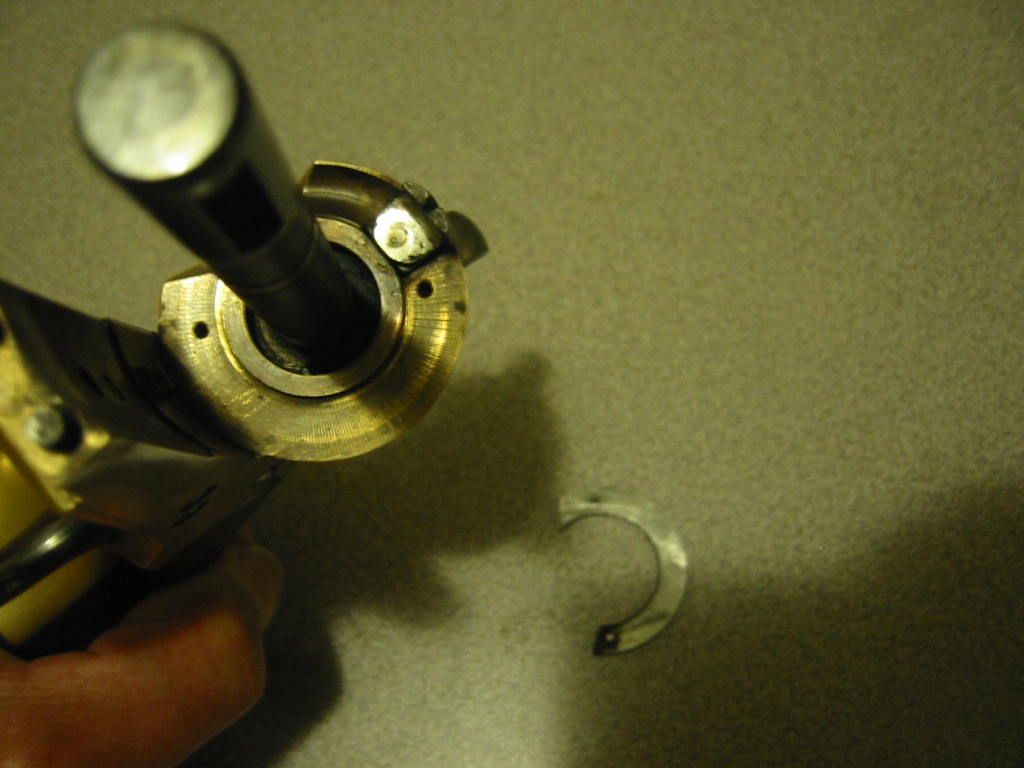Hey Hawg, my brass Remie did the same thing. The Remington relies on a flat surface to act as a bearing with the ratchet teeth cut into it . It works OK on the steel frame, not so well on the brass frame.
The Colt design incorporates a raised bearing surface for the rear of the cylinder to ride against. They carried this idea throughout the S.A. line. The Mod. P uses a recess which in effect, does the same thing.
This condition can happen to the open top as well and the reason is too much clearance for the cylinder to hammer away like a slide hammer. This brings us right back to the short arbor thing (get it fixed you guys!!). A tight barrel/cylinder clearance should be maintained to keep fore and aft cylinder movement to a minimum ( like .0015"-.002"). That makes it tough to generate enough force to damage the frame, cylinder or barrel (even with a pure max load diet).
The Remie suffers because of the same thing. The larger the barrel/cylinder clearance, the faster the damage. To solve the problem for the Remies would be to install a bushing (a la Colt) in the front of the cylinder. This would allow you to then set and maintain a close barrel/cylinder gap (since there is no bbl/cyl contact). It would also of course shield the base pin from fouling and increase (tremendously) run time.
Mike
www.goonsgunworks.com



